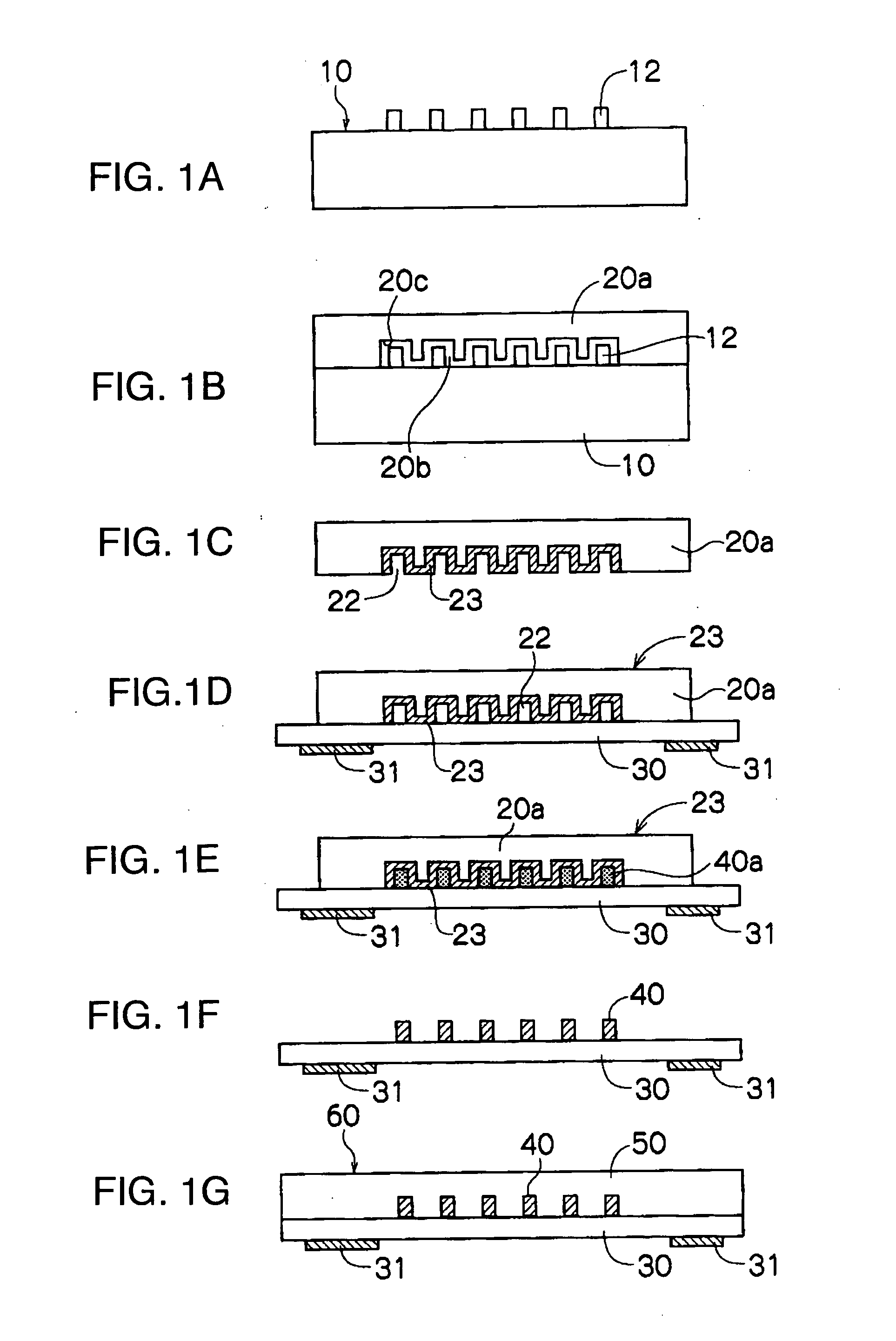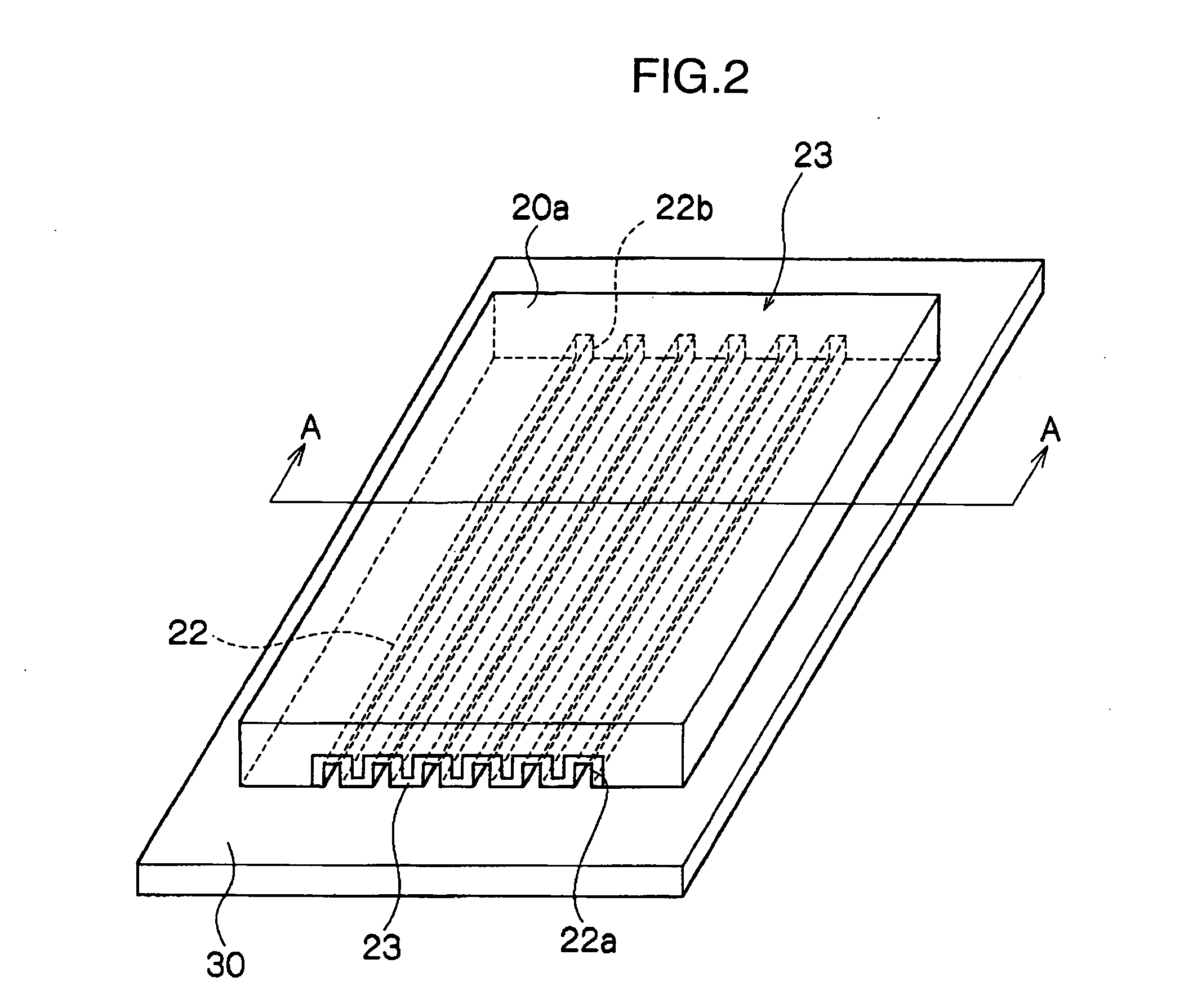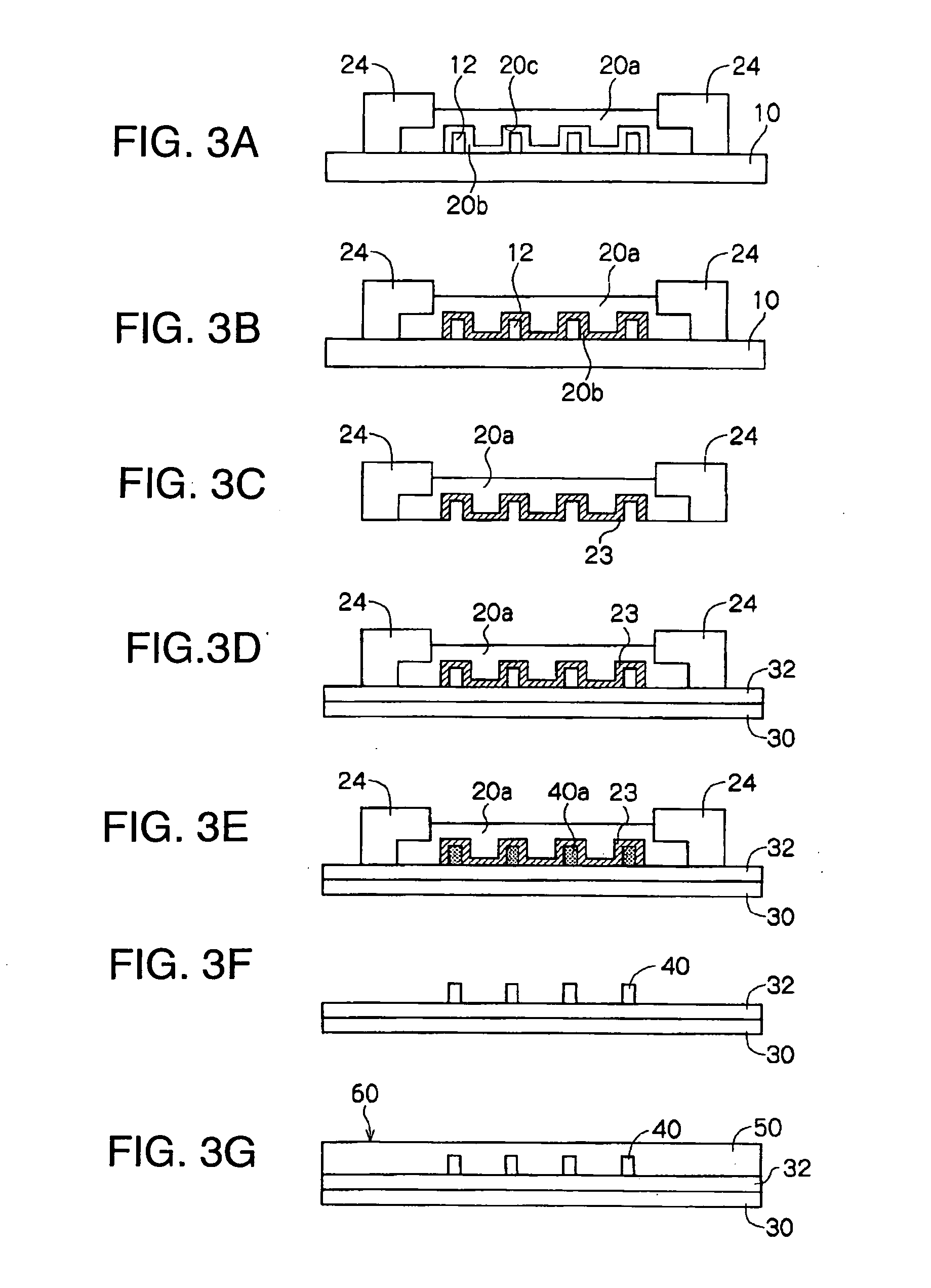Process for producing polymer optical waveguide
- Summary
- Abstract
- Description
- Claims
- Application Information
AI Technical Summary
Benefits of technology
Problems solved by technology
Method used
Image
Examples
example 1
Preparation of a Rubber Mold
[0138] A UV-curable type thick film resist (manufactured by Microchemical Corp., with a trade name SU-8) is applied on a quartz substrate by a spin coat method, thereafter the coat on the quartz substrate is prebaked at 80° C., the resist is exposed to light by a high-pressure mercury light through a photomask, the exposed resist is developed to form five convex portions with a section in the shape of a square (50 μm in width, 50 μm in height, 500 μm in pitch and 50 mm in length). Then, the convex portion is post baked at 120° C. to form a core master template.
[0139] Then, a reinforced member (the thickness of 1.5 mm, and made of aluminum) in which the opening corresponding to a UV-irradiation part is formed and which has three inlets and three outlets is prepared. The rubber layer-forming concave portion including groove parts which (100 μm in width, 100 μm in height, 500 μm in pitch and 50 mm in length, five) are formed in the same pitch as the conve...
example 2
Preparation of Rubber Mold
[0148] A UV-curable type thick film resist liquid (manufactured by Microchemical Corp., with a trade name SU-8) is applied on a silicon wafer substrate by a spin coat method, thereafter the coat on the silicon wafer substrate is prebaked at 80° C., the resist is exposed to light by a high-pressure mercury light through a photomask, the exposed resist is developed to form ten minute convex portions with a section in the shape of a square (100 μm in width, 100 μm in height, 1 mm in pitch and 100 mm in length). Then, the convex portion is post baked at 120° C. A pressure easing gap producing convex portion is formed on the edge part of the convex portion of the convex portions produced thus by the mold respectively. A pressure easing gap producing convex portion has the section of 2 mm in height, 10 mm in width (a direction that is orthogonal to the convex portion), and 20 mm in length of the longitudinal direction of a substrate and of a rectangle.
[0149] N...
PUM
| Property | Measurement | Unit |
|---|---|---|
| Thickness | aaaaa | aaaaa |
| Thickness | aaaaa | aaaaa |
| Thickness | aaaaa | aaaaa |
Abstract
Description
Claims
Application Information
 Login to View More
Login to View More - Generate Ideas
- Intellectual Property
- Life Sciences
- Materials
- Tech Scout
- Unparalleled Data Quality
- Higher Quality Content
- 60% Fewer Hallucinations
Browse by: Latest US Patents, China's latest patents, Technical Efficacy Thesaurus, Application Domain, Technology Topic, Popular Technical Reports.
© 2025 PatSnap. All rights reserved.Legal|Privacy policy|Modern Slavery Act Transparency Statement|Sitemap|About US| Contact US: help@patsnap.com



